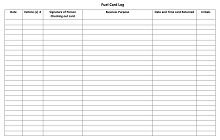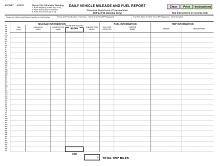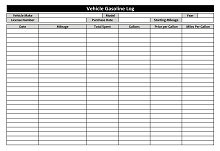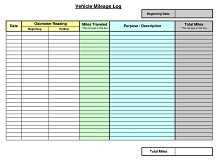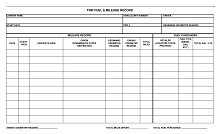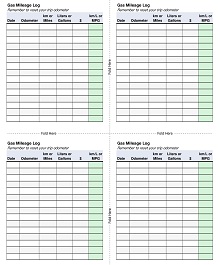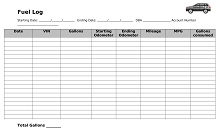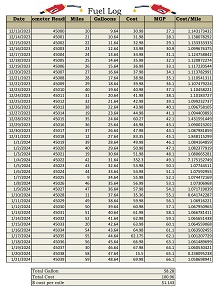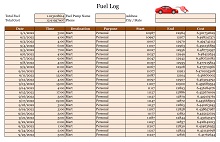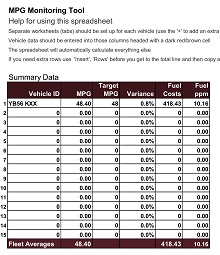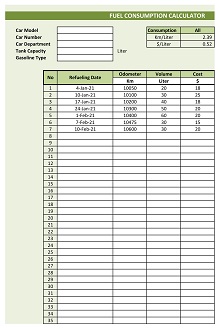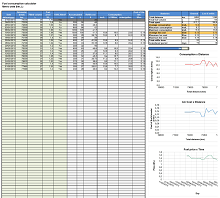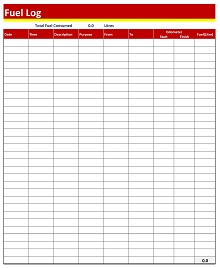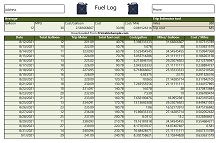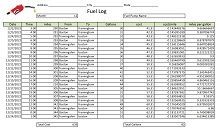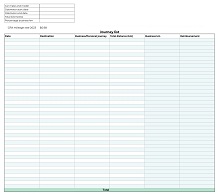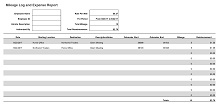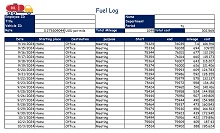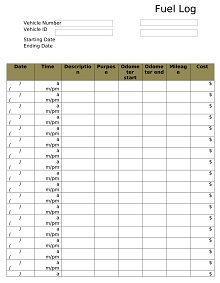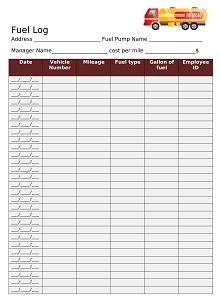32+ Free Printable Fuel Log Sheet Templates (PDF, MS Excel)
Tracking fuel use can be an important part of any successful business, and a fuel log sheet is a perfect way to accomplish it. Keeping an accurate record of fuel purchases and mileage can help boost fuel efficiency by highlighting areas where performance improvement is needed. With a well-designed Fuel Log Sheet Template, you can easily track when each vehicle needs maintenance, allow for cost comparisons among the vehicles in your fleet, and establish goals for improving their overall performance.
In addition to its financial benefits, using a fuel log also makes it easier to identify any suspicious activity or theft that may occur within your operation. With these benefits in mind, it’s no wonder why more businesses are using this type of spreadsheet regularly.
Download Free Fuel Log Sheet Templates
What is a Fuel Log Sheet
A fuel log sheet is an essential tool used by automobile owners to track their vehicle’s gas consumption. This document records key data such as total mileage, the number of gallons purchased, and any pertinent information noting the time and place of filling up.
The data from this sheet is invaluable for tracking tax deductions related to vehicle expenses and aiding in long-term maintenance decisions and short-term budgeting. Monitoring a car’s fuel usage patterns every week helps keep tabs on important variables like possible leaks or normal wear and tear that could lead to costly repairs down the road. Keeping a detailed and up-to-date fuel log sheet can help maximize efficiency in everyday driving and provide insight into overall vehicle health.
Types of Fuel Log Sheets
There are several different types of fuel log sheets available on the market today. Each type was designed with a specific purpose in mind; some are for tracking fuel usage in vehicles, while others track usage in boats or generators. Depending on your needs and preferences, you can choose from one of these three most common types:
- Vehicle Fuel Log Sheet – This type is specifically designed to track fuel usage in cars, trucks, vans, and other motorized vehicles. It records information such as trip distance, time spent driving, total mileage driven per day/week/month, and total cost per gallon.
- Boat Fuel Log Sheet – This type is designed to track fuel usage in boats and watercraft. It records information such as engine hours used per trip/day/week/month, total distance traveled per trip/day/week/month, and total cost per gallon.
- Generator Fuel Log Sheet – This type is specifically designed to track fuel usage in generators. It records information such as generator run time per day/week/month, total power output (in kilowatts), and total cost per gallon.
Benefits of Using a Fuel Log Sheet
A fuel log sheet is essential to ensuring that your vehicle is running efficiently. Fuel log sheets allow you to track your fuel consumption, giving you greater insight into what might be causing inefficiencies. Furthermore, they can help you keep an eye out for any signs of fuel leakage or theft, as well as alert you when it’s time to refuel.
Additionally, a fuel log sheet can come in handy if you ever need to look back and compare the differences between average costs and how much money has been spent on fuel over a specific duration of time. All these benefits make having a fuel log sheet an invaluable aid for vehicle owners, so it makes sense to make sure that one is kept regularly updated.
Creating a Fuel Log Sheet Template for Easy Mileage Tracking
Keeping track of mileage can be a challenge, especially if you have multiple vehicles or need to keep track of your travel for business purposes. A fuel log sheet template is an easy way to keep tabs on your miles, and it can save you time and money in the long run. Here is a step-by-step guide on how to create an effective fuel log sheet template.
Creating Your Template
The easiest way to create a fuel log sheet template is with Microsoft Excel or another spreadsheet program. This will allow you to customize the sheet as needed and make edits when necessary. To get started, open up your spreadsheet program and create a new workbook.
Add the following column headings at the top of your worksheet: Date, Vehicle, Mileage Start, Mileage End, Total Miles Driven (calculated), Gallons Used (calculated), Cost per Gallon (calculated), Total Cost (calculated). Then, add any other columns that may be applicable, such as notes or the purpose of the trip.
Filling Out Your Fuel Log Sheet Template
Once you have created your fuel log sheet template, it’s time to start filling it out. Begin by entering today’s date in the “Date” column and then fill in the vehicle information in the “Vehicle” column. Next, enter your starting mileage number in the “Mileage Start” column and the end mileage number in the “Mileage End” column. This will automatically calculate your total miles driven for that day/trip in the “Total Miles Driven” column.
Next, enter how many gallons of gas you used during that trip into the “Gallons Used” column, which will automatically calculate how much each gallon cost you in the “Cost per Gallon” column, as well as what your total cost was for that trip in the “Total Cost” column. Finally, add any additional notes or purpose of a trip into their respective columns and save your workbook.

